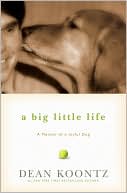Cesar's Way: The Natural, Everyday Guide to Understanding and Correcting Common Dog Problems
“I rehabilitate dogs. I train people.” —Cesar Millan\ There are at least 68 million dogs in America, and their owners lavish billions of dollars on them every year. So why do so many pampered pets have problems? In this definitive and accessible guide, Cesar Millan—star of National Geographic Channel’s hit show Dog Whisperer with Cesar Millan—reveals what dogs truly need to live a happy and fulfilled life.\ From his appearances on The Oprah Winfrey Show to his roster of celebrity clients to...
Search in google:
“I rehabilitate dogs. I train people.” —Cesar MillanThere are at least 68 million dogs in America, and their owners lavish billions of dollars on them every year. So why do so many pampered pets have problems? In this definitive and accessible guide, Cesar Millan—star of National Geographic Channel’s hit show Dog Whisperer with Cesar Millan—reveals what dogs truly need to live a happy and fulfilled life. From his appearances on The Oprah Winfrey Show to his roster of celebrity clients to his reality television series, Cesar Millan is America’s most sought-after dog-behavior expert. But Cesar is not a trainer in the traditional sense—his expertise lies in his unique ability to comprehend dog psychology. Tracing his own amazing journey from a clay-walled farm in Mexico to the celebrity palaces of Los Angeles, Cesar recounts how he learned what makes dogs tick. In Cesar’s Way, he shares this wisdom, laying the groundwork for you to have stronger, more satisfying relationships with your canine companions. Cesar’s formula for a contented and balanced dog seems impossibly simple: exercise, discipline, and affection, in that order. Taking readers through the basics of dog psychology and behavior, Cesar shares the inside details of some of his most fascinating cases, using them to illustrate how common behavior issues develop and, more important, how they can be corrected. Whether you’re having issues with your dog or just want to make a good bond even stronger, this book will give you a deeper appreciation of how your dog sees the world, and it will help make your relationship with your beloved pet a richer and more rewarding one.Learn what goes on inside your dog’s mind and develop a positive, fulfilling relationship with your best friendIn Cesar’s Way, Cesar Millan—nationally recognized dog expert and star of National Geographic Channel’s hit show Dog Whisperer with Cesar Millan—helps you see the world through the eyes of your dog so you can finally eliminate problem behaviors. You’ll learn:• What your dog really needs may not be what you’re giving him• Why a dog’s natural pack instincts are the key to your happy relationship • How to relate to your dog on a canine level• There are no “problem breeds,” just problem owners• Why every dog needs a job• How to choose a dog who’s right for you and your family• The difference between discipline and punishment• And much more!Filled with fascinating anecdotes about Cesar’s longtime clients, and including forewords by the president of the International Association of Canine Professionals and Jada Pinkett Smith, this is the only book you’ll need to forge a new, more rewarding connection with your four-legged companion.Also available as a Random House AudioBookFrom the Hardcover edition.
Cesar's Way\ \ By Cesar Millan and Melissa Jo Peltier \ Random House\ Cesar Millan and Melissa Jo Peltier\ All right reserved.\ ISBN: 0739324993 \ \ \ Chapter One\ Chapter 2: If We Could Talk to Animals\ \ What is the communication style you use with your dog? Do you implore him to come to you, while he refuses, continuing to run down the street after a neighborhood squirrel? When your dog steals your favorite slipper, do you talk baby talk to him to try to get it back? Do you scream at the top of your lungs for your dog to get off the furniture, while he just sits there, staring at you as if you're crazy? If any of these sounds like you, I know you're aware that the techniques you're using aren't working. You understand that you can't "reason" with a dog, but you simply don't know any other way to communicate with him. I'm here to tell you that there's a much better way.\ \ Remember the story of Dr. Dolittle, the man who was able to speak and understand the language of any animal he happened to meet? From the Hugh Lofting books to the 1928 silent film, to the thirties radio series, to the 1967 movie musical and seventies cartoons, to the blockbuster Eddie Murphy comedies, this wonderful tale and its main character have appealed to children and adults generation after generation. Just think of the countless worlds that would be unlocked if we saw things as animals see them. Imagine looking down at the earth through the eyes of a soaring bird,moving through life in three dimensions like a whale, or "seeing" the world through sound waves, the way bats do. Who hasn't dreamed of such thrilling possibilities? The attraction of the Dr. Dolittle story is that it brings animals to life, in big-screen living color.\ \ What would you say if I told you that Doctor Dolittle's secret was more than just creative fiction?\ \ Perhaps you're imagining this secret from a human perspective.\ \ You're wondering if I'm telling you that there's a verbal way to talk to your dog, perhaps with the use of a phrase book that translates your language into his. What would his language look like, sound like, you wonder? Would it include the words sit, stay, come, and heel? Would you have to shout the translations, or could you whisper them? Would you have to learn how to whimper and bark? Sniff your pet's behind? And how would your dog answer you back? How would you translate what he was saying? As you can see, creating a dog-to-human phrase book--the way, say, an English-to-Spanish phrase book is created--would be a very complicated effort indeed.\ \ Wouldn't it be simpler if there was a universal language that every species could understand? "Impossible," you say. "Even human beings don't all speak the same language!" True, but that hasn't kept people from trying to find a common language for centuries. In the ancient world, all the higher-class, educated people learned Greek. That way, they could all read and understand the most important documents. In the Christian era, anybody who was anybody knew how to read and write Latin.\ \ Today, English is at the top of the language food chain. I learned this the hard way when I first arrived in America fourteen years ago. Believe me, if you're not born speaking it, English is a monster of a language to learn from scratch--yet everyone from the Chinese to the Russians now accept it as the international language of business. Humans have sought other ways to breach the language barrier. No matter what language you speak, if you're blind, you can use Braille. If you're deaf, you can understand any other deaf person using International Sign Language. Mathematics and computer languages cross many linguistic borders and allow humans of different tongues to converse easily with one another, thanks to the power of technology.\ \ If humans can succeed in designing these collective languages, can't we create a way to converse with the other species on the planet? Isn't there a language we can learn that means the same thing to every creature?\ \ Good news! I'm happy to report that the universal language of Doctor Dolittle already exists. And humans didn't invent it. It's a language all animals speak without even knowing it, including the human animal. What's more, all animals are actually born knowing this language instinctually. Even human beings are born fluent in this universal tongue, but we tend to forget it because we are trained from childhood to believe that words are the only way to communicate. The irony is, even though we don't think we know the language anymore, we are actually speaking it all the time. Unknowingly, we are broadcasting in this tongue 24-7! Other species of animals can still understand us, even though we may not have a clue how to understand them. They read us loud and clear, even when we're unaware that we're communicating!\ \ This truly universal, interspecies language is called energy.\ \ Energy in the Wild\ \ How can energy be a language? Let me give you some examples. In the wild, different animal species intermingle effortlessly. Take the African savannah or a jungle, for instance. At a watering hole in a jungle, you might see monkeys and birds in the trees, or on a savannah, different plant eaters, such as zebras or gazelles, wandering around, happily drinking out of the same crystal-clear pond. All is peaceful, despite the many different species sharing the same space. How do they all get along so smoothly?\ \ How about a less exotic example? In your own backyard you may have squirrels, birds, rabbits, even foxes, all happily coexisting. There's no trouble until you rev up your lawnmower.\ \ Why? Because all these animals are communicating with the same relaxed, balanced, non-confrontational energy. Every animal knows that all the other animals are just hanging out, doing their own thing--drinking water, foraging for food, relaxing, grooming one another. Everybody's feeling mellow and no one's attacking anyone else. Unlike us, they don't have to ask one another how they're feeling. The energy they are projecting tells them everything they need to know. In that sense, they are speaking to one another, all the time.\ \ Now that you've got this peaceful vision in your mind, imagine this: Suddenly, a new animal enters your backyard, or approaches our imaginary jungle waterhole, projecting a completely different energy. This new energy could be something as minor as one squirrel trying to plunder another's stash, or a gazelle jockeying another gazelle for a better drinking position at the oasis. It could also be as serious as a hungry predator seeking to subdue its next prey. Ever notice how a whole group of peaceful animals can turn scared or defensive in an instant, sometimes even before a predator has shown itself on the scene? They probably got a whiff of its scent--but it's also probable that they sensed the energy the predator was projecting.\ \ What's always amazing to me about the animal kingdom is that even if a predator is near, all the other animals can usually tell if it's safe to stay around it or not. Imagine being introduced to a man you knew to be a serial killer. Would you be able to relax in his presence? Of course not! But if you were another kind of animal on this planet, you would probably be able to sense whether the serial killer was on the prowl or simply kicking back. Animals immediately recognize when a predator is projecting a hunting energy, sometimes even before they spot the predator itself. As humans, we are so often blind to these nuances in animal energy--we think a tiger is dangerous at all times, when, really, if he's just eaten a three hundred-pound deer, he's probably more tired than treacherous. The moment his tummy gets empty, however, he's a different animal--all instinct, all survival energy. Even your backyard squirrel will pick up on this subtle difference. Yet we humans tend to be blind to what, in the animal kingdom, is pretty much a flashing red light.\ \ Here's an example of animal energy that folks who live in the American South can probably relate to. On a sunny day in Florida, Louisiana, or the Carolinas, you'll see giant alligators sunning their leathery bodies on the banks of swamps--all over expensive, exclusive golf courses! Meanwhile, golfers are teeing off a few feet away. Herons and cranes and turtles are happily sunning themselves right next to these terrifying reptiles. Eightypound old ladies are walking their teacup-size dogs on footpaths just inches from the alligators' swamp. What's going on here? It's simple. The other animals--from the turtles to the teacup Chihuahuas--are aware, on an instinctual level, that these fearsome predators aren't in a hunting mode at the moment. One thing you can be sure of--when the same big creature's tummy starts to rumble and his energy shifts into hunting mode, the rest of the animals will be gone in the blink of an eye. Except maybe the golfers. But they are one of the strangest species in nature, and even modern science hasn't figured them out yet.\ \ Energy in Humans\ \ When it comes to energy, we humans have much more in common with animals than we usually like to admit. Imagine one of the most ruthless jungles in the human world--the high school cafeteria. Picture it as a watering hole where different species--in this case, the cliques of jocks, nerds, and stoners--peacefully intermingle. Then a bully "accidentally" bumps into a smaller guy's food tray. The energy released by that interaction will ripple right through the entire room. Ask your teenager if this isn't true. And exactly as in the animal kingdom, this energy shift doesn't even have to be as blatant as a shove. Let's say the little guy in the cafeteria is having a bad day. He's failed two tests in a row and is in a weak state of mind. He happens to look up and accidentally catch the eye of the bully. Maybe the bully was just minding his own business, but as soon as he picks up on the weaker guy's diminished energy, the whole dynamic between them changes in a split second. In the animal kingdom, that's called survival of the fittest.\ \ Let's take this concept beyond the school lunchroom and think about our society as whole. Right or wrong, we in America expect our leaders to project a dominant, powerful energy, like that of a Bill Clinton or a Ronald Reagan. Some powerful leaders project a charismatic energy that infects and energizes everyone around them--consider Tony Robbins. Martin Luther King, Jr., projected an energy that was what I call "calm-assertive"--the ideal energy for a leader. Though Gandhi was also a leader, his energy was of a more compassionate nature.\ \ It's interesting to note that Homo sapiens is the only species on the planet that will follow a wise, kind, compassionate, or lovable leader. Humans will even follow an unstable leader, but that's another book in itself! As difficult as it may be for us to understand, in the animal kingdom, a Fidel Castro would win out as leader over a Mother Teresa any day. In the animal world, there is no morality, no right and wrong. Conversely, animals never cheat or lie their way to power--they can't. Other animals would figure them out in a heartbeat. Nature's leaders must project the most obvious and uncontestable strength. In the animal kingdom, there are only rules, routines, and rituals--based on survival of the strongest, not of the smartest or fairest.\ \ Ever hear of "the smell of fear"? That's not just an expression. Animals sense vibrations of energy, but smell is their next strongest sense--and in a dog, energy and scent seem to be deeply connected. In fact, dogs empty their anal glands when they are afraid, emitting a smell that's distinctive not only to other dogs but to most animals (including us). A dog's sense of smell is connected to the limbic system, the part of the brain responsible for emotion. In his book The Dog's Mind, Dr. Bruce Fogle cites studies from the 1970s that showed that dogs can detect butyric acid--one of the components of human perspiration--at up to a million times' lower concentration than we can.1 Think of lie detector sensors that can pick up minute changes in the perspiration on a person's hands when she is being deceptive. In essence, your dog is a living, breathing "lie detector"!\ \ Do dogs actually physically "smell" fear in us? They certainly can sense it instantly. Countless joggers and mail carriers relate this harrowing experience--running or walking past a house and causing the dog there to bark, growl, or even charge the fence or gate. Now, this could be a dog that has adopted the role of protector of the house and takes that role very seriously--and too many mail carriers and joggers have the scars to show how powerful, aggressive dogs--what I call red-zone dogs--get out of control. (Red-zone dogs are serious business, and I'll address them in depth in a later chapter.)\ \ For the purposes of understanding how dogs sense emotional states, imagine this as you walk by a house with a red-zone dog in it: Perhaps the barking dog has a secret. He may be more afraid of you than you are of him! Once you freeze up in terror, however, the balance of power instantly changes. Does the dog pick up on your energy shift through his "sixth sense"? Or does he smell some change in your body or brain chemistry? Science hasn't spelled it all out in layman's terms as of yet, but in my opinion, it's a combination of both. I can be sure of this from decades of close observation: you cannot "bluff" a dog the way you might be able to bluff a drunken poker buddy. Once you shift into the emotion of fear, that dog instantly knows he has an advantage over you. You are projecting a weak energy. And if the dog gets out, you are much more likely to be rushed or bitten than if you had tuned out the barking and simply gone on with your day. In the natural world, the weak get weeded out quickly. There's no right or wrong about it--it's just the way life on earth has worked for millions of years.\ \ Energy and Emotion\ \ The most important thing to understand about energy is that it's a language of emotion. Of course you never have to tell an animal that you're sad, or tired, or excited, or relaxed, because that animal already knows exactly how you're feeling. Think back on some of the beautiful stories you've read in publications like Reader's Digest and People magazine--stories of pets who have comforted, even saved, their sick, depressed, or grieving owners.\ \ Continues... \ \ \ \ Excerpted from Cesar's Way by Cesar Millan and Melissa Jo Peltier Excerpted by permission.\ All rights reserved. No part of this excerpt may be reproduced or reprinted without permission in writing from the publisher.\ Excerpts are provided by Dial-A-Book Inc. solely for the personal use of visitors to this web site. \ \
\ From Barnes & Noble"I rehabilitate dogs. I train people." Cesar Milan's motto helps explain his success. The National Geographic TV Dog Whisperer star doesn't specialize in dog trainer tricks ("Sit. Stay. Come. Heel."); he deals with attuning human behavior with dog psychology. His sometimes uncanny ability to "read" canines has made him the most sought-after dog expert in America. In Cesar's Way, he guides pet owners through the conundrum of dog behavior, from aggressiveness to obsessive behavior to obesity. Best in show.\ \








